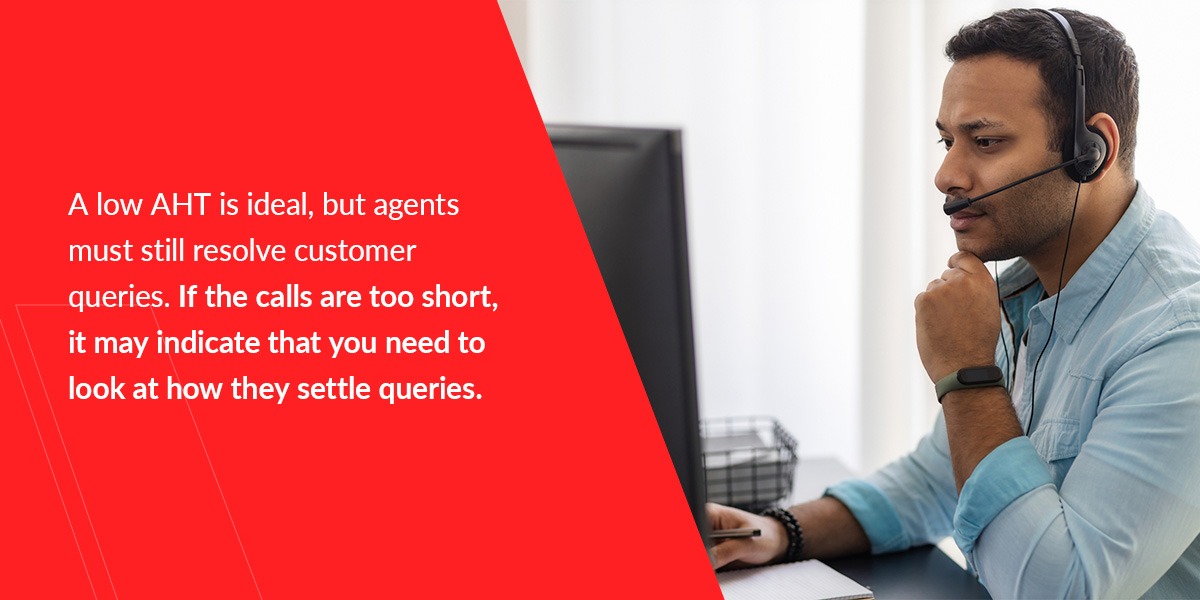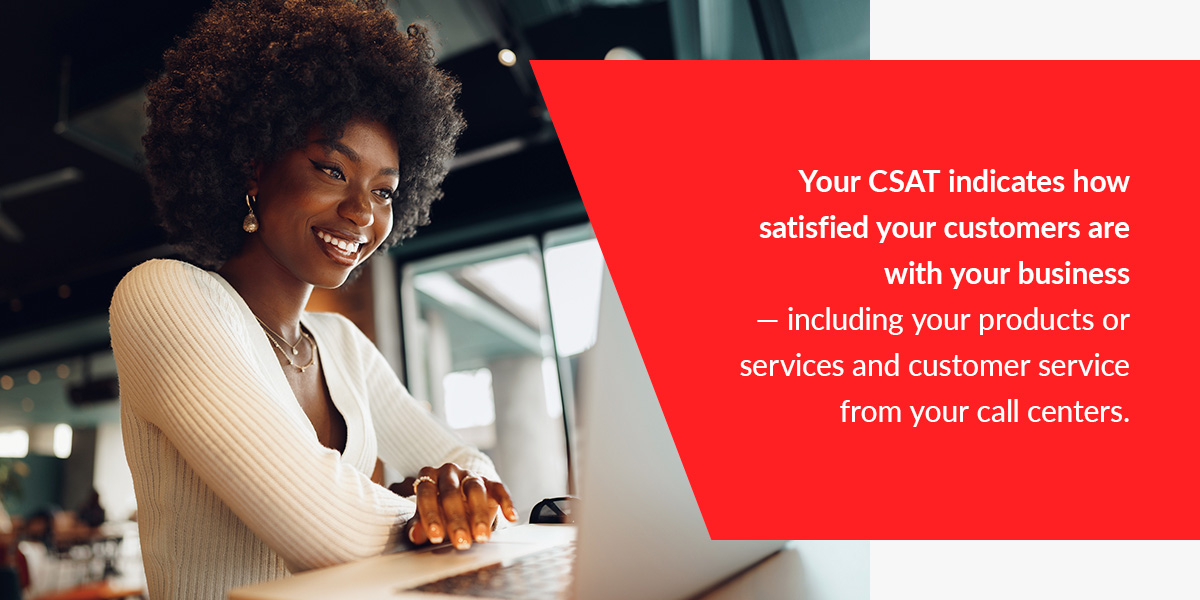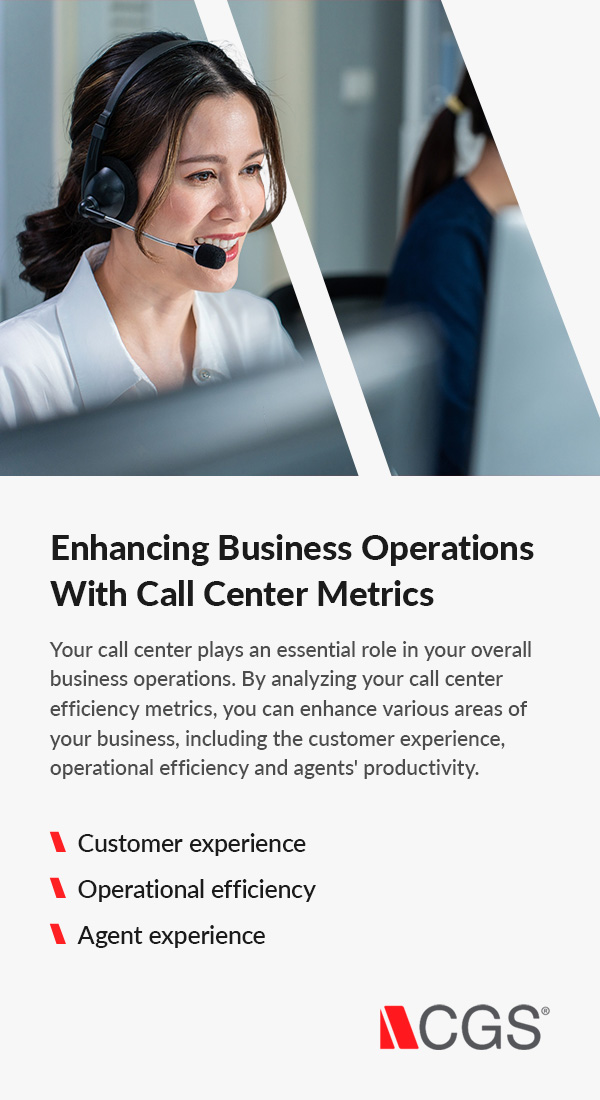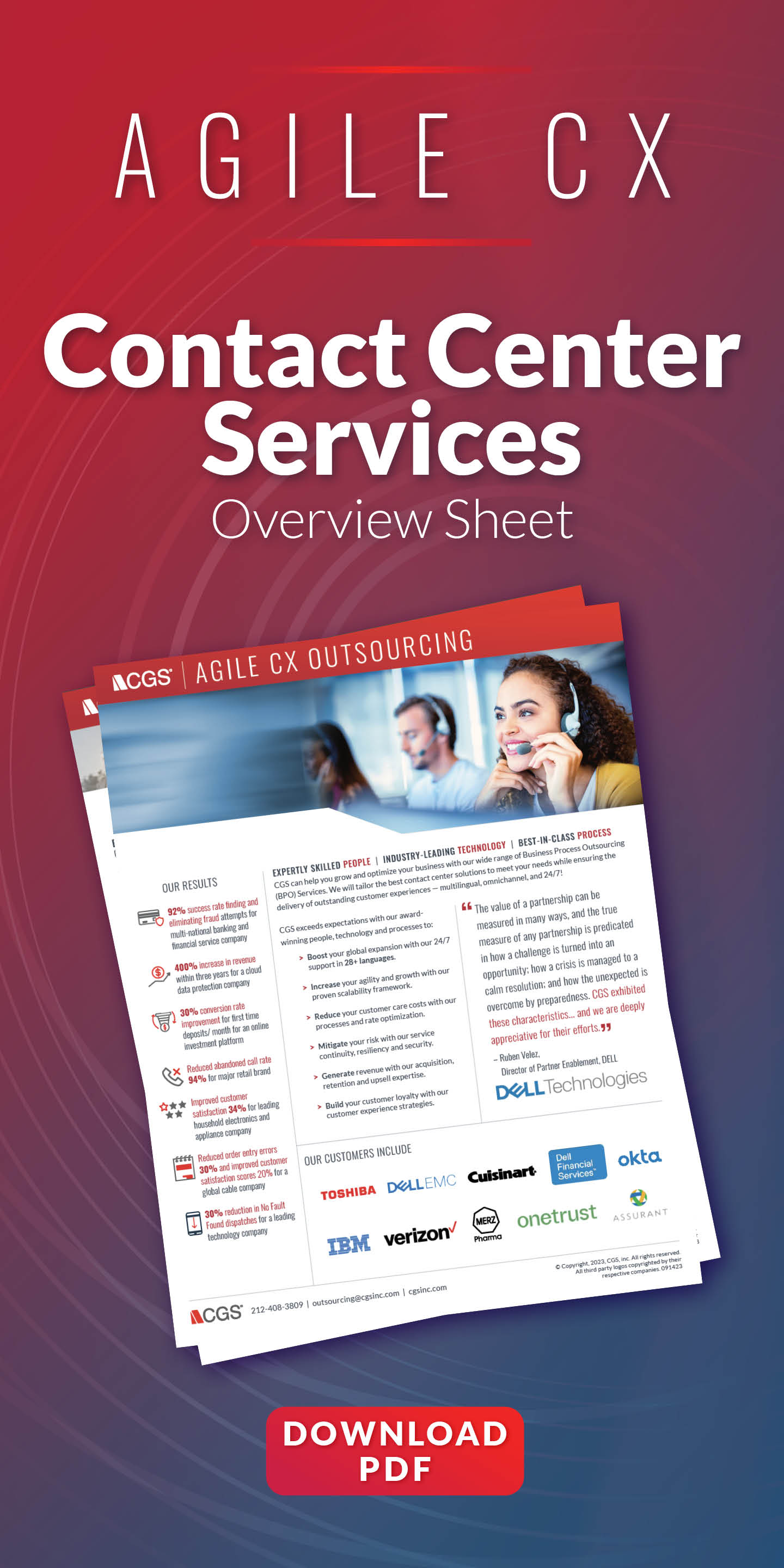Topics
Top Call Center KPIs to Enhance Agent Performance

Tracking some key performance indicators (KPIs) can give you insight into your call center's performance. More than monitoring your agent's productivity and efficiency, you can also gather data on your customer satisfaction. Your call center agents are essential to how your customers perceive your business. When your agents are motivated and productive, they are more likely to deliver an exceptional customer experience.
From average call abandonment to cost per call and customer satisfaction, you can track and monitor various contact center metrics to improve your call center's performance.
11 Call Center KPIs for Productivity
The call center performance metrics used to measure productivity are unique to each business. Even within the same company, call center agent performance metrics differ by each role. For example, an agent in IT support will have different metrics than one in sales. However, there are universal KPIs for call centers that you can adapt to your business model. Let's look at some call center KPI examples that can guide you on how to improve call center agent performance.
1. Call Arrival Rate
This call center metric measures the rate of inbound calls over a specific period. Tracking this KPI helps you understand how many calls are coming in and when you receive the most and least calls. With this data, you can schedule your staff accordingly and ensure that you have enough agents during your busiest times and seasons.
2. Percentage of Blocked Calls
To determine how many of your customers get a busy tone when they call you, measure the percentage of blocked calls. You want this percentage to be as low as possible since that means your customers can reach you when they call. A high percentage of blocked calls will impact your customer experience. Your customers want the reassurance that they can contact you.
To improve this metric, you may need to hire more staff, increase agent productivity or upgrade your technology to support the number of calls you receive.
3. Average Call Abandonment
This metric measures how many customers hang up their calls before they reach an agent. Your average call abandonment should be zero or as close to it as possible. If you have a high average call abandonment rate, it could be due to the same factors that cause blocked calls — understaffing, productivity, poor technology and processes. Look at ways to improve these factors to decrease your call abandonment.
4. First Response Time (FRT)
FRT measures how long a customer has to wait before an agent answers their phone call. The waiting time for customers varies by industry. You should aim for this number to be on the lower end of your industry. The lower your FRT, the more satisfied your customers will be with their experience. If you want to improve your FRT, your staffing levels and technology capabilities are good places to start.
5. Average Handle Time (AHT)

Your average handle time tells you how long an agent takes to resolve a customer's query. Some businesses measure this based on the timing of the phone call, from when the agent answers to when they disconnect. Others also look at after-sales activities, such as updating the CRM.
A low AHT is ideal, but agents must still resolve customer queries. If the calls are too short, it may indicate that you need to look at how they settle queries. Ensure your customers have the best outcomes so they don't have to call back.
Know your ideal AHT and measure individual agent performance against this metric. If an agent's time is much higher than the average, they may need additional training and development to improve productivity.
6. Average After-Call Work Time (AWT)
Sometimes, an agent can end the call with the customer and then finish resolving their query. Ending the call saves making the customer wait while the agent works on their request. To maintain excellent customer service, agents must settle inquiries in the minimum amount of time. By resolving the query after the phone call, you can lower your average handle time — you should also aim to keep your AWT low to enhance the overall customer experience.
7. Agent Utilization Rate
This metric helps you understand how agents use their time when they are on duty. Agent utilization rate looks at the percentage of time agents spend completing tasks, from when they pick up the phone until they complete any post-call tasks.
This metric will vary by industry and depend on the type of calls the agents handle. You'll have to monitor calls and agent performance over time to find your ideal agent utilization rate. Once you have your ideal rate, you can use it as a benchmark to set goals — improving your processes and training staff can help you achieve this rate.
8. First Call Resolution (FCR)
FCR tracks how many calls your agents can resolve without escalating, transferring, pausing or returning a customer's call. The perfect outcome is for an agent to resolve a customer's query the first time. If customers have to keep calling back, it can negatively influence their relationships with your company and impact your bottom line.
Some businesses also choose to measure repeat call rate (RCR) — this metric tells you how many times customers have to call back to resolve their query. Companies with high RCR can leverage augmented reality (AR) technologies to improve this metric.
9. Cost Per Call (CPC)
As the name suggests, CPC measures how much each call costs you on average. To calculate this number, add the costs of your calls — labor, technology and other expenses to run your call center — and divide it by the number of calls you receive.
CPC will differ based on your industry, your business size, and the complexity of your products or services. If you have a high CPC, there may be inefficiencies in your call center, such as complex technology that is costly to maintain. It might be that your staff needs to improve how long they take to help customers. Knowing your CPC will help you to identify areas where you can cut costs.
10. Agent Turnover Rate
Do you have happy call center agents who stay with your business for a long time? A low turnover rate indicates that your staff is motivated and satisfied. If you do have a high turnover, you must get to the bottom of why your employees are leaving. Find ways to motivate your agents and make their jobs easier, like upgrading your technology.
11. Revenue per Successful Call
This metric applies more to agents who are responsible for sales. It tells you the average amount of products your agents sell and whether they meet their sales targets. You'll also be able to determine which products are most popular.
If you are seeing high revenue per successful call, it may also point to customer satisfaction. Customers happy with your service are more likely to become repeat customers who refer your products or services to others. If your agents have a high revenue per successful call, they also provide excellent customer service.
7 Customer Experience Metrics
Your customers' experience with your call center plays an essential role in the overall performance of your business. If your customers are happy after speaking with your agents, they will likely stay loyal to you. Understanding customer service KPIs can improve your business as a whole.
1. Customer Satisfaction Score (CSAT)

Your CSAT indicates how satisfied your customers are with your business — including your products or services and customer service from your call centers. To measure this metric, you can use surveys to understand the customer experience with your call center.
Each call center measures customer service differently, but you can ask customers to rate their experience of different stages of your call center from one to five — one being unsatisfactory and five being excellent. Your CSAT will then be the percentage of satisfied customers. Whatever model you choose, it's essential to ensure that it accurately measures and reflects your customer experience.
2. Customer Effort Score (CES)
This metric helps your business understand how much effort customers need to put into resolving their queries. For example, if the customers have to call several times for assistance, this impacts how they view your business and detracts from the overall customer experience.
To measure your CES, ask your customers to rate how easy it was to resolve their query from one to five — one being very difficult and five being very easy. Subtract the total of those who said it was easy from those who said it was difficult. The higher your CES is, the easier it is for clients to resolve their queries.
3. Net Promoter Score (NPS)
Happy customers are loyal customers, and loyal customers are more likely to recommend your business to a friend. To measure your NPS:
- Ask your customers how likely they are to recommend your company to a friend — one being never and 10 being highly likely.
- Separate your responses into segments — promoters select nine or 10, passives are customers who choose seven or eight, and detractors select six or below.
- Subtract the number of promoters from the total number of detractors to get your NPS — the higher it is, the better.
4. Customer Retention Rate (CRR)
CRR determines how many of your customers stay customers within a specific period. You can measure your customer retention rate by subtracting new customers during a period from the number of active customers during the same period. Then divide by the number of customers at the beginning of the period and multiply by 100 to get a percentage. Your goal is to retain your customers. If they are happy with the service they receive from your call center agents, they are more likely to become return customers.
5. Customer Churn Rate (CCR)
Your CCR is related to CRR but shows how many customers have left in a given period. To measure this, divide the number of customers you lost during a period by the number of customers you had at the beginning, multiplied by 100 to get a percentage. Every employee should aim for a low churn rate as it indicates that your customers are happy with your business.
6. Channel Mix
This metric helps you determine the service channels that your customers can use. You can find out which channel customers use the most by measuring the sessions on each one. Many businesses use the following channels:
- Phone calls
- Social media
- SMS
- Live messaging or chat apps
The customer experience must be consistent across all of your service channels.
7. Average Waiting Time
The average wait time tells you how long customers wait in a queue before an agent answers their call. It is the total time customers wait divided by the total calls agents answer. No one enjoys waiting long periods, which is why your business should keep this number as low as possible.
This metric can help you determine whether there are inefficiencies in your call center or if you need to hire more staff to handle the number of calls you receive.
Enhancing Business Operations With Call Center Metrics

Your call center plays an essential role in your overall business operations. By analyzing your call center efficiency metrics, you can enhance various areas of your business, including the customer experience, operational efficiency and agents' productivity.
- Customer experience: Your customers are the reason for your business. They'll often spend time interacting with your call center agents. Measuring metrics for customer experience can help you improve your customer service and keep your customers happy. Satisfied customers are more likely to become repeat customers and recommend your business to others, boosting revenue.
- Operational efficiency: Tracking your call center metrics helps you understand how you use your resources. You can determine precisely how agents use resources in the call center and what areas have room for improvement. When you use your resources efficiently, you can increase productivity and decrease waste.
- Agent experience: Happy agents are motivated, more productive and more likely to provide great customer service. Tracking your agents' experience and productivity is crucial to ensure they work at their full potential.
Leveraging Outsourcing Partners to Improve KPIs
Call center outsourcing partners have the expertise and technology to help businesses improve call center performance management and KPIs. When you choose an outsourcing partner, you can leverage numerous benefits that improve call center reporting metrics, customer satisfaction and overall business operations.
Outsourcing partners enable you to be available to your customers 24/7. This availability is crucial when you have customers in different time zones — they need to be able to contact you and get the support they need during the hours that work best for them. Outsourcing allows you to provide uninterrupted support to your clients at any time of the day.
Agents in an outsourcing company have the expertise to provide exceptional customer support. They receive the training needed to complete customer inquiries quickly and efficiently. They also have the necessary skills to handle these queries with the standard of professionalism that you require. Outsourcing companies specializing in call centers have state-of-the-art technology to carry out this function. They have the capital to invest in technology that improves call center performance. Coupled with customer service skills, outsourcing partners can enhance customer experience metrics.
Call centers can also help to reduce your cost per call. It generally costs less to outsource your call center operations because you save on the technology, office rent, infrastructure and labor costs you would spend if you had to run your call center yourself. You can then invest this money into other essential parts of your business.
Choosing an outsourcing partner can also improve metrics such as your average handle time and average call abandonment. These partners have the advanced technology and technical ability to handle customer queries quickly.
Speak to an Outsourcing Specialist at CGS Today
Measuring and tracking call center KPIs help you track your agents' performance and identify improvement areas. KPIs play a crucial role in identifying areas of inefficiency where you can improve your agents' performance and enhance the customer experience. If you need the expertise and technology to improve your call center KPIs, consider partnering with a customer support outsourcing company.
CGS is an award-winning customer support outsourcing company that leverages state-of-the-art technologies to provide exceptional customer support services for clients. We help you uncover improvement areas in your KPIs and identify the best tools and processes to achieve the best outcomes. Contact us to speak to an outsourcing specialist today!
Linked Sources:
- https://www.cgsinc.com/blog/learning-and-development-what-it-and-why-it-s-important
- https://www.cgsinc.com/blog/augmented-reality-field-services-5-ways-decrease-repeat-service-calls-technicians
- https://www.cgsinc.com/blog/benefits-outsourcing-your-call-center-services
- https://www.cgsinc.com/en/business-process-outsourcing/customer-support
- https://www.cgsinc.com/en/contact



